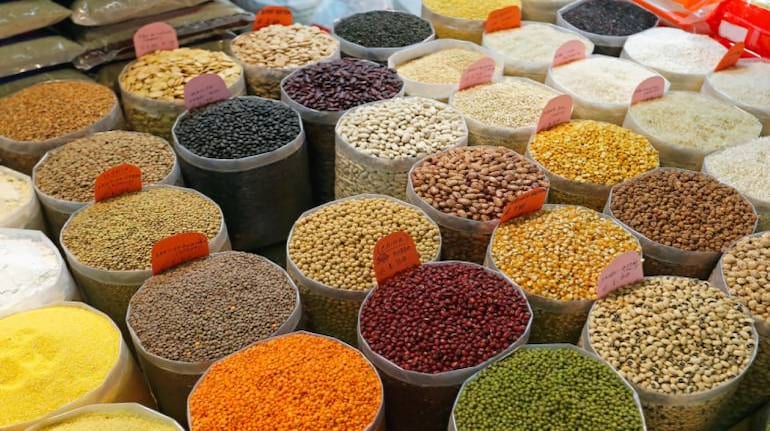



The demand for free foodgrain distributed under the Pradhan Mantri Gramin Kalyan Anna Yojna (PMGKAY) seems to be slowing, data shared in Lok Sabha and on the department of food and public distribution suggest. The distribution of foodgrain under the scheme that is to run until November 2021 was about 8% lower during May-July compared with the same period last year, signalling a less severe economic distress during the second wave.
Also Read: India’s foodgrain mountain is rising and it is proving to be expensive
Data on foodgrain distributed show that 99.78 lakh metric tonnes of wheat and rice were given out between May and July this year compared to 108.01 lakh metric tonnes of grain in the same period of last year. In April 2020, the first month of the scheme, a total of 39.51 lakh tonnes of wheat and rice were distributed.
What the scheme entails
The scheme was launched to provide some relief to the poorest sections of the society, primarily the informal sector workers, daily wagers and migrant workers who suffered the most when a national lockdown was imposed. Under the PMGKAY, every person covered by the National Food Security Act (NFSA) was entitled to 5 kg of food grain per month when the scheme was in force. The allocation was in addition to their normal allocation under NFSA. The government had also distributed 1 kg of pulses/chana per household during April-November 2020.
The scheme was run for eight months from April to November of 2020 and was restarted in May 2021 to run until November. The Centre had allocated 322 lakh metric tonnes of rice and wheat for distribution under the scheme for the eight months of 2020 and 278 lakh metric tonnes for the seven months of 2021 to roughly 80 crore NFSA beneficiaries. Many households are known to have traded their free quota for other essential goods, given that the financial stress they were facing.
Also Read: Cabinet approves extension of PMGKAY for 5 months till November
A bulk of foodgrain was distributed in the most populous states, which also have a larger share of the impoverished population. Nearly 19% of foodgrain distributed so far in 2020 and 2021 has gone to Uttar Pradesh and about 11% to Bihar, data shared by the ministry of consumer affairs, food and public distribution in a reply to a question in Lok Sabha show. Uttar Pradesh accounts for about 17% of the country’s population and Bihar a little more than 9%.
Who got what
At a cumulative level, six states got over 57% of foodgrain distributed under the scheme under the PMGKAY in the eight months of 2020 and May to mid-July 2021. Other major beneficiary states are Maharashtra, West Bengal, Madhya Pradesh and Rajasthan. Jammu and Kashmir, Delhi, Uttarakhand and Himachal Pradesh were among the larger states that had the fewest beneficiaries and together accounted for just about 3% of foodgrain distributed. The seven northeastern states together accounted for 1.35% of foodgrain distributed, which was less than the quantity distributed in Haryana.
The decline in foodgrain distribution may also be due to a change in the ratio of rice and wheat distributed. The quantity of rice distributed in May-July 2021 is sharply lower compared to the same period of the last year, while the quantity of wheat distributed is sharply higher.
Also Read: Explained | What is One Nation One Ration Card scheme
In the initial four months of the scheme last year, 107 lakh metric tonnes of rice were distributed compared to a little more than 40 million tonnes of wheat – just about 27% of foodgrain distributed was wheat. In the subsequent months, the share of rice and wheat distributed was more balanced and a similar ratio was maintained this year. In May-July this year, wheat accounted for 49% of foodgrain distributed.
Discover the latest Business News, Sensex, and Nifty updates. Obtain Personal Finance insights, tax queries, and expert opinions on Moneycontrol or download the Moneycontrol App to stay updated!
Find the best of Al News in one place, specially curated for you every weekend.
Stay on top of the latest tech trends and biggest startup news.